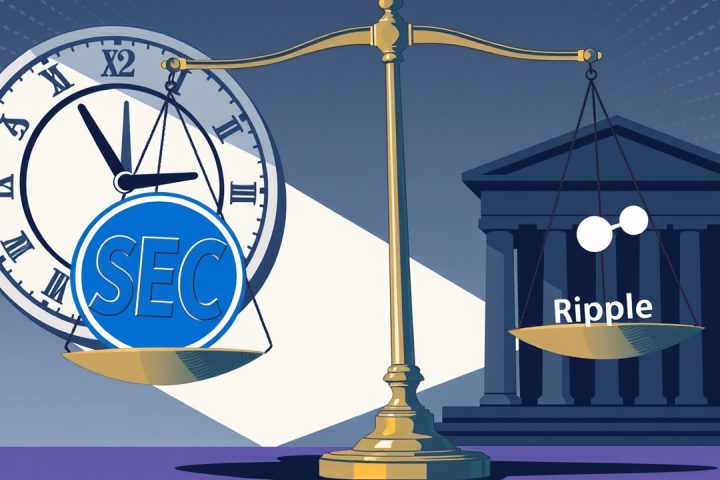Address at the American Bankers Association Annual Convention
In a significant address at the American Bankers Association Annual Convention held in Charlotte, Jonathan Gould, the leader of the Office of the Comptroller of the Currency (OCC), sought to alleviate concerns regarding the potential impact of stablecoins on the banking system. He emphasized to community banks that instead of viewing these digital currencies as threats, they should consider them as tools to enhance their competitiveness against larger Wall Street institutions.
Concerns Over Deposit Withdrawals
Gould reassured the audience that any substantial withdrawal of deposits prompted by the rise of stablecoins would not happen abruptly or without detection. He stated,
“If there were to be a material flight from the banking system, I would be taking action,”
indicating that both high-ranking officials and trade associations would also respond to such a scenario. His comments come on the heels of recent industry discussions about the need for legislative changes to the GENIUS Act, which is the nation’s inaugural significant regulatory framework for stablecoins, enacted in July.
Impact of Stablecoins on Banking
Recent studies have indicated that stablecoins could potentially strip $1 trillion in deposits from banks in emerging markets over three years, with some evaluations by the Treasury Department suggesting that the fallout could reach as much as $6.6 trillion in deposits within the U.S., depending on the allure of the stablecoins’ yield offerings.
Moreover, the stablecoin sector is on an upward trajectory; a prediction market created by Dastan, which owns Decrypt, indicated a 55% probability that the total market capitalization of stablecoins could surpass $360 billion by February 2026.
Regulatory Framework and Community Banks
The federal banking agencies involved in implementing rules under the GENIUS Act are well aware of Congress’s deadlines, Gould noted, highlighting payment stablecoin interoperability as a potential avenue for community banks to challenge the dominance of America’s largest banks in the payments landscape. He expressed his commitment to facilitate safe engagement in new technologies for community banks, stating,
“I don’t think that’s fair”
regarding an uneven playing field where only institutions with advanced risk management capabilities can access these innovations.
Advocacy for Legislative Amendments
In August, a coalition comprised of the American Bankers Association, the Bank Policy Institute, and various state banking associations reached out to Congress advocating for the amendment of the GENIUS Act to address multiple legislative gaps. They insisted on extending interest prohibitions to encompass digital asset exchanges and called for revisions that would limit non-financial firms from issuing stablecoins without stringent approval processes.
Future of Banking and Innovation
As the financial environment shifts, some banking experts, like Prarabdh Sharma of STBL, conveyed that the anxiety surrounding stablecoins extends beyond mere regulatory issues and into realms of survival. He articulated,
“Even a 10% shift could raise their funding costs by 20–30 basis points, ultimately limiting their lending capacity and profitability.”
Yet, this transformation also opens doors for banks willing to innovate, suggesting they can leverage blockchain technology to tokenize deposits and release their own regulated, interest-bearing digital currencies.
Industry Developments
In the wake of these developments, companies like Bridge have recently applied for national trust charters from the OCC, joining industry players such as Coinbase, Circle, Paxos, and Ripple in seeking regulatory approval. Historically, Anchorage Digital was the first digital asset organization to receive an OCC charter in 2021, although it initially operated under a consent order that was lifted in August after the OCC recognized its compliance with necessary regulations.




